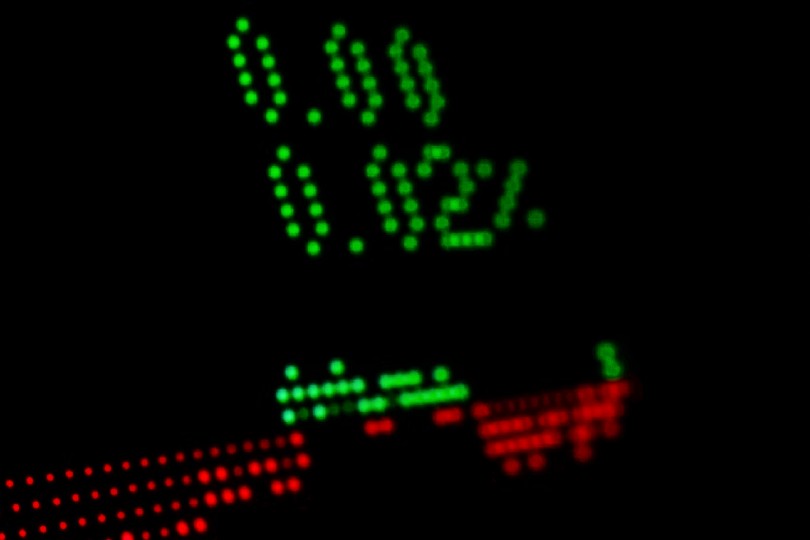As a popular and cost-efficient way to invest, it’s worth taking the time to really understand Exchange Traded Funds (ETFs) – and that includes the difference between physical and synthetic ETFs.
This article will help you get to grips with how they work, what the key differences are between physical ETFs and synthetic ETFs, and the positives and pitfalls you should bear in mind when formulating your investment strategy.
Trusted partner

70% of traders lose money trading with IG.
Commission-free trading
- Free demo account
- Advanced charting tools
- Extensive educational content
Physical vs synthetic ETFs: Key takeaways
- ETFs are funds that track the performance of an index.
- Each ETF holds multiple assets but they are traded as single stocks.
- You can choose from two types of ETF: physical or synthetic.
- A physical ETF tracks performance by purchasing all, or some, of the particular stocks in an index.
- Synthetic replication is achieved through swap transactions.
- Synthetic ETFs can often offer higher potential returns but they also often come with greater risk, including exposure to counterparty default.
What is a physical ETF?
A physical ETF replicates the underlying index by buying all or part of the stocks within that index.
So a physical ETF tracking the entire constituents of the FTSE 100 buys each of the stocks in the FTSE 100 in proportionate volumes.
Some physical ETFs will only buy a sample of securities from a market. This may be appropriate when a chosen index is too large, or the underlying markets are too illiquid, to own every single stock. So a representative sample is bought instead.
Most investors in European ETFs choose a physical replication for their investments.

What is a Synthetic ETF?
A synthetic ETF does not buy any shares in the companies listed in the index or sector it is tracking.
Instead, a synthetic ETF tracks the performance of the target index or list by entering into a contract with a counterparty, typically an investment bank, to create a synthetic replica of the index. This is done using financial derivative products, namely swaps, futures, or options. By entering into a swap agreement, the counterparty is promising to deliver the same effective gains as the pre-specified index. However, the basket of securities bought and held by the swap counterparty may be completely unrelated to the index the ETF is tracking. Even the asset classes included in the collateral can differ from those in the benchmark.
Under the terms of swap contracts, an ETF will pay out any returns it earns from the basket of securities to the swap counterparty. In exchange, the swap counterparty pays the index’s return to the ETF.
When the performance of the index is higher than that of the securities held by the counterparty, they owe the difference in performance to the fund provider. However, if the performance of the underlying index is lower than that of the securities held by the counterparty, the synthetic ETF fund owes money to the counterparty.
Synthetic ETFs are relatively new, having only existed for around 20 years but they have become increasingly popular in recent years.
What are the differences between physical and synthetic ETFs?
The main differences between synthetic and physical ETFs are that:
- A synthetic ETF does not hold actual index constituents. It just mimics the value of the selected index through derivatives.
- Physical ETFs track the index they are replicating by directly owning the assets in that index.
What are the advantages of physical ETFs?
The main advantages of physical ETFs are:
- They are easier to understand – ETFs that buy the underlying securities in an index are generally more transparent, straightforward and easy to understand
- They are less risky – The terms ‘counterparty exposure’ and ‘counterparty risk’ describe the risk of a counterparty defaulting on their agreement. Investors don’t need to worry about this with a physical ETF as there are no swaps between two parties.
What are the disadvantages of physical ETFs?
The main disadvantages of physical ETFs are:
- Increased costs – Investors must factor in transaction costs and taxes on dividends.
- Limited access to certain markets – Physical ETFs provide very limited access to certain markets and exposures.
- Tracking error – No ETF can perfectly mirror the performance of the underlying index. The difference is called the tracking error. The difference is greater when funds are directly invested.
What are the advantages of synthetic ETFs?
The main advantages of synthetic ETFs are:
- Lower costs – The cost of a swap can be cheaper than the transaction costs of buying stocks.
- Lower tracking error – Synthetic ETFs usually have a lower tracking error rate in comparison to physical funds because the returns are financially engineered, rather than being based on actual physical ownership of underlying assets.
- Reduced tax – In the UK, tax on dividends is higher than capital gains tax. With a synthetic ETF, investors do not receive any dividends. Instead, growth is returned as capital gains.
- Easier access to emerging markets – Synthetic ETFs allow access to emerging markets. For example, in China – where short-selling is banned for many stocks – a swap agreement allows a bank to go ‘short’ without having to physically short the securities, and investors are willing to pay a premium above the index to do this.
- Access to hard-to-access assets – A synthetic ETF can be helpful if you want to gain exposure to hard-to-access assets, like commodities such as crude oil.
What are the disadvantages of synthetic ETFs?
The main disadvantages of synthetic ETFs are:
- Lack of transparency – Fund providers don’t always fully disclose to investors which financial derivatives they use.
- Counterparty risk – Synthetic ETFs carry exposure to counterparty risk. That’s because returns rely on the counterparty honouring their commitment and not defaulting on their contractual obligations. It may be a small risk statistically, but if you’re investing your life savings, it may be a risk you’re not prepared to take.
- Complexity – These are complicated financial instruments that retail investors can find confusing.
Having said that, proponents of synthetic ETFs argue that a physical ETF engaging in securities lending faces similar counterparty risk to a synthetic ETF with a well-diversified panel of counterparties and a prudent approach to collateralisation.
How can you tell whether you have a synthetic or physical ETF?
Your ETF provider should give you this information in your key investor information document (KIID). Alternatively, check the fund provider’s website: most ETF providers post them online.
FAQs
Should you invest in physical or synthetic ETFs?
Are synthetic ETFs risky?
- Learn how to invest in the FTSE100
- Have you considered transferring your pension?
- Find the best trading platforms




